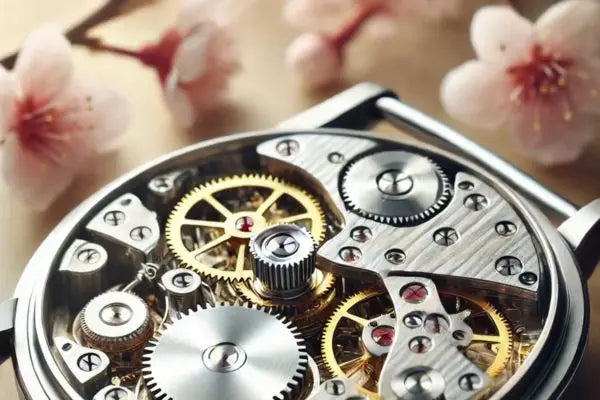Summary :
- Who is behind the iconic Japanese movements?
- What characterizes a Japanese watch movement?
- The Kaizen principle in watchmaking
- The properties of Japanese watches
- When Swiss design meets Japanese movement
The Japanese watch movement embodies the perfect balance between watchmaking tradition and modern innovation. Long associated with Swiss watchmaking, the search for reliability and aesthetics has allowed Japanese watches to seduce more and more enthusiasts and novices eager to combine tradition, innovation and accessible luxury.
Who is behind the iconic Japanese movements?
Citizen and Orient, two pillars of Japanese watchmaking, design movements that combine tradition and innovation. These mechanisms, recognized for their precision and robustness, embody Japanese know-how and appeal to watchmaking enthusiasts.
Citizen's renowned precision
Citizen is known for its Miyota line, including the 8200 caliber, which offers world-renowned precision. These movements are distinguished by their modular design, making them easy to maintain and customize. Citizen has also revolutionized watchmaking with the Eco-Drive system.
Orient watches and their extended reserve
Orient designs sophisticated in-house movements, often praised for their excellent power reserve. For example, Orient’s F6 range offers an extended power reserve and reliable accuracy. These movements, manufactured entirely in-house, exemplify Orient’s commitment to total control of quality and performance.
What characterizes the movement of Japanese watches?
Japanese watch movements are distinguished by three main qualities: robustness, innovation and precision. These characteristics are the result of rigorous engineering, combined with a constant search for improvement.
Robustness and durability
Japanese movements are built to last. Manufacturers focus on long-term reliability, with parts that are resistant to wear and extreme conditions. Their watches are therefore ideal for sports or diving.
Technological innovation
Japanese manufacturers have revolutionized watchmaking by introducing innovations which combines mechanics and electronics, or Citizen's Eco-Drive, which is powered by solar energy. These technical advances meet the needs of a modern clientele.
Mechanical precision
Japanese movements are renowned for their tolerance to minimal time variations. For example, Miyota calibers display performances that match Swiss standards, with a daily drift often less than 20 seconds.
The Kaizen principle in watchmaking
Japanese success is explained by the Kaizen principle, which means "continuous improvement". This concept, fundamental in Japanese companies, is based on the idea that every aspect of a process can always be perfected. In watchmaking, this translates into a constant search for precision, reliability and functionality.
The properties of Japanese watches
Japanese watches are distinguished by their movements that combine high-performance materials and careful design.
Quality materials
Japanese watch movements use high-quality materials specially selected for their robustness and efficiency. Stainless steel is preferred for its anti-corrosion properties, while sapphire crystal protects against scratches, ensuring the durability of the internal mechanisms. Mainsprings, made from advanced alloys such as Nivaflex, improve energy stability and reduce wear, ensuring exceptional longevity.
A precise design
Japanese movements are distinguished by their consistent precision. For most calibers, the daily drift varies between -10 and +20 seconds, which is remarkable for mechanical watches. High-end models achieve increased precision, limiting drift to just a few seconds per day thanks to advanced regulation systems. This reliability is the result of meticulous engineering and rigorous testing carried out during manufacturing.
The Japanese watch movement combines reliability, innovation and elegance, supported by an approach combining tradition and modernity. Enough to compete without complexes with the big Swiss houses while remaining relatively more accessible.


What makes a watch waterproof?
How does a mechanical watch work?